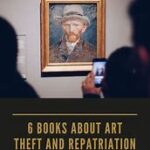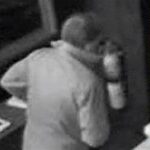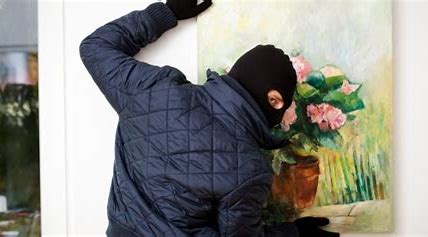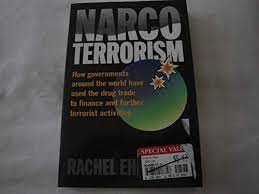Art Theft and Recovery in the USA: A Comprehensive Analysis
Abstract:
Art theft represents a significant challenge to cultural heritage preservation and law enforcement efforts worldwide, including in the United States. This essay provides a detailed examination of art theft and recovery in the USA, exploring its historical context, contemporary trends, causes, impacts, and strategies for prevention and recovery. Drawing upon scholarly research, case studies, legal frameworks, and investigative techniques, this essay aims to shed light on the complexities of art theft, its implications for the art market and cultural heritage, and the measures taken to combat this illicit trade.
1. Introduction
Art theft has been a persistent problem throughout human history, with valuable artworks often targeted by thieves seeking financial gain or ideological motives. In the United States, art theft poses significant challenges to law enforcement agencies, museums, collectors, and the art market, threatening the preservation of cultural heritage and the integrity of artistic expression. This essay provides a comprehensive analysis of art theft and recovery in the USA, examining its historical roots, contemporary manifestations, causes, impacts, and responses by stakeholders.
2. Historical Context of Art Theft
The history of art theft in the USA is intertwined with the broader evolution of the art market, cultural heritage preservation efforts, and law enforcement practices. From the looting of archaeological sites by early settlers to the theft of masterpieces from museums and private collections, art theft has been fueled by a combination of greed, warfare, colonialism, and organized crime. Notable cases, such as the theft of the Isabella Stewart Gardner Museum in 1990, have highlighted the vulnerability of cultural institutions to sophisticated theft operations and the challenges of recovering stolen artworks.

3. Contemporary Trends in Art Theft
Art theft in the USA today encompasses a wide range of criminal activities, including thefts from museums, galleries, private collections, archaeological sites, and public spaces. While high-profile heists attract media attention, the majority of art thefts are opportunistic crimes targeting unsecured artworks in homes, offices, and public spaces. The rise of online marketplaces and digital technologies has also facilitated the illicit trade in stolen artworks, enabling thieves to launder stolen goods and evade detection by law enforcement agencies.
4. Causes of Art Theft
The causes of art theft in the USA are multifaceted, reflecting a combination of economic, social, cultural, and legal factors. Some common drivers of art theft include:
- Financial Incentives: Valuable artworks represent lucrative targets for thieves seeking financial gain through sale, ransom, or extortion. The high prices commanded by certain artworks on the black market incentivize criminal enterprises to invest resources in planning and executing sophisticated theft operations.
- Cultural Heritage Looting: Archaeological sites and cultural institutions are targeted by looters seeking to plunder valuable artifacts and antiquities for sale on the illicit market. The destruction of cultural heritage sites and the loss of irreplaceable artifacts deprive future generations of their cultural heritage and contribute to the illicit trade in stolen artworks.
- Weak Security Measures: Inadequate security measures, such as alarm systems, surveillance cameras, and security personnel, increase the vulnerability of museums, galleries, and private collections to theft. Failure to implement robust security protocols and due diligence practices can leave artworks exposed to opportunistic thieves and professional criminals.

- Legal and Regulatory Gaps: Gaps in national and international laws governing the trade in cultural property create loopholes that can be exploited by art thieves and traffickers. Limited regulation of the art market, lax enforcement of existing laws, and inconsistencies in international cooperation hinder efforts to prevent and prosecute art theft.
5. Impacts of Art Theft
Art theft has far-reaching consequences for the art market, cultural heritage preservation, and society as a whole. Some common impacts include:
- Loss of Cultural Heritage: The theft of artworks deprives society of its cultural heritage and artistic legacy, robbing future generations of the opportunity to appreciate and study these priceless treasures. Irreplaceable artifacts and antiquities stolen from archaeological sites represent a loss of scientific knowledge and historical understanding.
- Economic Costs: Art theft imposes significant economic costs on victims, insurers, and the art market, including expenses related to recovery efforts, legal proceedings, and security enhancements. The devaluation of stolen artworks and the reputational damage to affected institutions can have long-term financial consequences for stakeholders.
- Disruption of Artistic Expression: The theft of artworks disrupts the artistic process and inhibits creative expression by depriving artists of recognition, royalties, and opportunities for public display. Stolen artworks may be lost forever or hidden from public view, depriving society of their aesthetic and cultural value.

- Undermining Trust and Confidence: Art theft undermines trust and confidence in the integrity of the art market, cultural institutions, and the rule of law. The perception of insecurity and vulnerability within the art world can deter collectors, investors, and donors from participating in cultural philanthropy and supporting public art initiatives.
6. Strategies for Prevention and Recovery
Preventing and recovering stolen artworks requires a coordinated effort by law enforcement agencies, museums, galleries, collectors, insurers, and international partners. Some key strategies include:
- Enhanced Security Measures: Implementing robust security measures, such as alarm systems, surveillance cameras, and physical barriers, can deter theft and mitigate the risk of artworks being stolen. Investing in training for security personnel and conducting risk assessments of vulnerable sites can help identify and address security vulnerabilities.
- Inventory and Documentation: Maintaining detailed inventories and documentation of artworks, including photographs, descriptions, and provenance records, can aid in the recovery and identification of stolen items. Digital databases and registration systems, such as the Art Loss Register and INTERPOL’s Stolen Works of Art database, facilitate collaboration between law enforcement agencies and art institutions.
- International Cooperation: Strengthening international cooperation and information sharing between law enforcement agencies, INTERPOL, UNESCO, and other international organizations is essential for combating art theft and recovering stolen artworks. Mutual legal assistance treaties, extradition agreements, and joint task forces enable coordination and collaboration on cross-border investigations and recovery efforts.

- Public Awareness and Education: Raising public awareness about the problem of art theft and the importance of cultural heritage preservation can help deter theft and facilitate the recovery of stolen artworks. Public outreach campaigns, educational programs, and social media initiatives can empower individuals to recognize and report suspicious activities related to art theft.
7. Conclusion
Art theft represents a significant challenge to cultural heritage preservation and law enforcement efforts in the USA and beyond. By understanding the historical roots, contemporary trends, causes, impacts, and responses to art theft, stakeholders can work together to prevent thefts, recover stolen artworks, and safeguard cultural heritage for future generations. Through enhanced security measures, international cooperation, public awareness, and education, the USA can combat art theft and protect its rich artistic legacy for the benefit of all.



